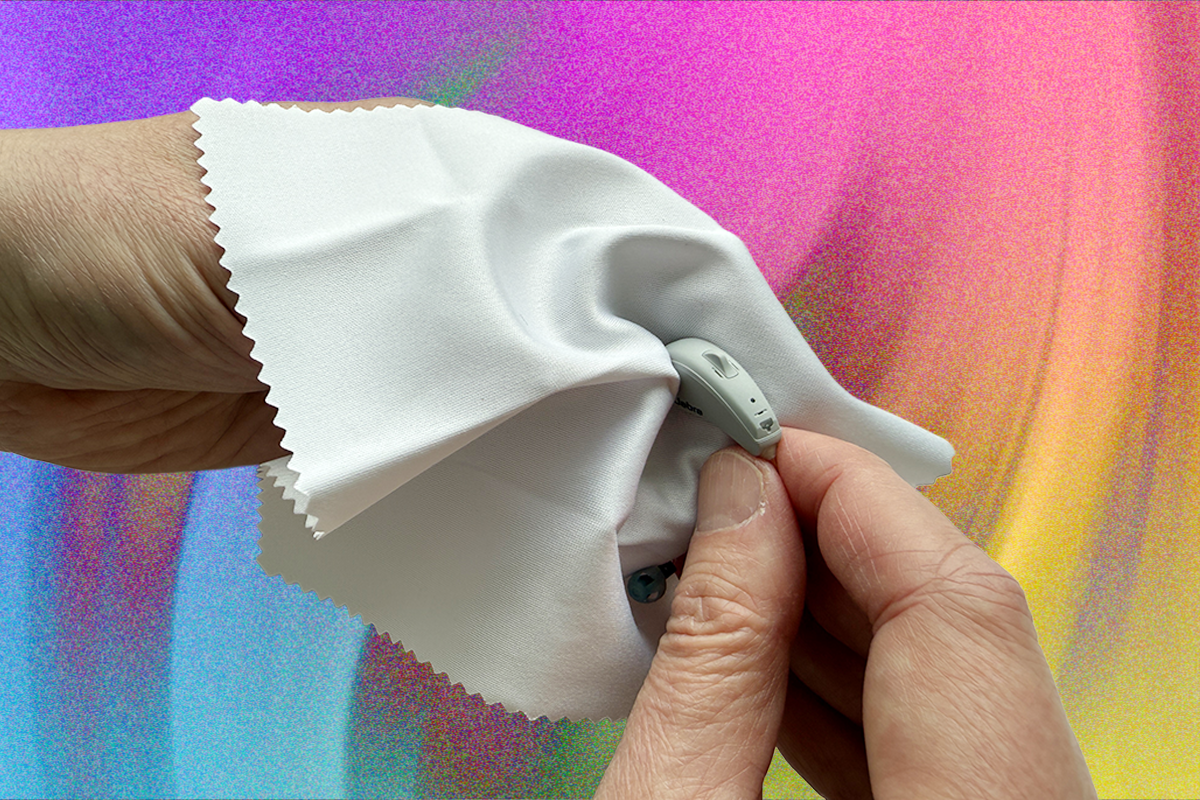All products featured on WIRED are independently selected by our editors. However, we may receive compensation from retailers and/or from purchases of products through these links.
As anyone who’s ever stuck a cotton swab in there knows, your ear canal is a filthy, disgusting place. If you’re wearing hearing aids for hours a day, there’s no way to avoid the fact that they, too, will invariably become equally gross. This isn’t just aesthetically unpleasant. Dirty hearing aids won’t work well (if at all), as even a speck of earwax can clog the delicate electronics, preventing them from relaying sound properly.
There’s no unilateral advice for how often you should clean your hearing aids, but most pros suggest doing so at least weekly. However, if at any time you notice your hearing aids’ audio quality beginning to suffer, cleaning them thoroughly should be your first step, no matter how long it’s been since your last cleaning.
Here’s how to clean hearing aids. The advice here applies to most behind-the-ear hearing aids. In-the-ear hearing aids can be cleaned by following the same basic process, though some steps will not apply because they lack the relevant components.)
1. Wipe Them Clean
Photograph: Chris Null
Start cleaning by attacking the obvious. Any wax or grime on the exterior surface of the aids can be rubbed off with a standard microfiber cloth or an eyeglass cleaning cloth. Any larger bits of wax on your eartips can often even be rubbed off with your bare fingers, provided they are clean. Whatever you use, the point is to get any larger or visible bits of debris off your hearing aids, especially before you put them into your ears for the first time each day.
Important: Do not use any water or liquid cleansers when cleaning your hearing aids, as these devices can be extremely sensitive to water and humidity.
2. Grab a Brush
Photograph: Chris Null
Some hearing aid models include a small brush, often with a tiny wire loop on the reverse end. (Something like this.) Use it to gently brush the microphone ports on each hearing aid, usually located on the backside of the device. If you weren’t provided a brush, something similar, such as the one included with an electric shaver or hair trimmer, or even a toothbrush, should work fine.
You can also use this tool to gently brush the tip of the dome of each eartip, where wax is most likely to accumulate. If any tenacious wax is stuck to the tip of the dome, try using the wire loop on the reverse of the brush to gently scoop it out. Next, check the back of the receiver, where the wire attaches to it, and brush this area as well. You can use a microfiber cloth to remove any material that is dislodged during this step.
Some very old hearing aids have a long vent that runs through them entirely. This can be cleaned with a special wire that is included with the product (as well as the wire loop on the back of the hearing aid brush). Vents like this are not common on modern hearing aids.
3. Change the Wax Guard
Photograph: Chris Null
Photograph: Chris Null
Beneath your eartips, you will generally find a small white cylinder known as a wax guard, wax filter, or wax trap. Its function is exactly what it sounds like: Preventing wax from getting into the hearing aid mechanism and clogging it up. Eventually, these wax guards will get too clogged to clean with a brush, at which point they should be replaced. Depending on your usage and the volume of earwax you have, that could mean once a month.
If your hearing aid has a wax guard, it probably comes with a kit of replacement guards, invariably contained within a small plastic case of eight or so. Flip open the case and remove one of the plastic tools from the sleeve very delicately. The replacement guard is on the other side of the tool, and it is easy to accidentally dislodge when you take the tool out of the case.
With the eartip removed from the hearing aid, insert the bare (black) side of the tool directly into the wax guard, then remove it. This will pull the old wax guard out of the hearing aid completely.
Now flip the tool around to the other side, which will have a white tip. This is your new, clean wax guard, ready for use. Carefully insert the white tip into the hole created by removing the old wax guard, then remove the tool again. It will leave the new wax guard snugly in place. Discard the used tool, replace the eartips, and you’re ready to go.
4. Change the Eartips
Photograph: Chris Null
Eventually, eartips will wear out or break, especially if you remove them frequently to clean your hearing aids, or they will just become too filthy to clean effectively. Solution: Replace them with fresh ones. Your hearing aids probably came with additional eartips in your preferred size, but when you run out, you can purchase more directly from the manufacturer (along with additional wax guard tools, if needed). Third-party eartips are available for many model hearing aids, but quality will vary considerably.
When finished, give everything another quick wipe-down with your microfiber cloth. And remember to always keep your hearing aids stored in their case (never a pocket) when not in use.
Power up with unlimited access to WIRED. Get best-in-class reporting that’s too important to ignore for just $2.50 $1 per month for 1 year. Includes unlimited digital access and exclusive subscriber-only content. Subscribe Today.




